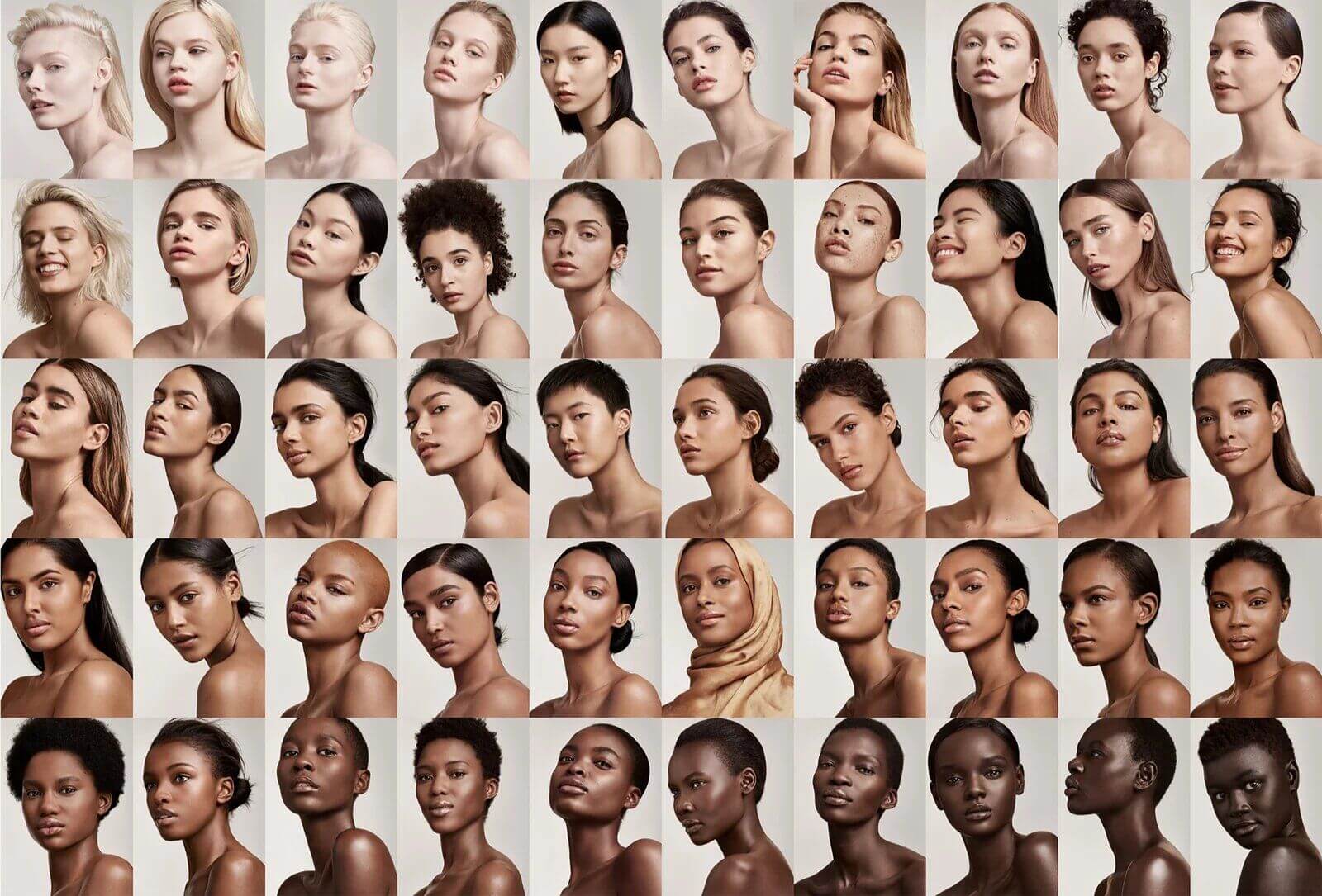How are Gen Z and Millenials changing the landscape of the beauty industry? Let’s talk about numbers and the power of this prolific ‘selfie generation’.
The leading generational groups for the beauty industry are Millennials and Gen Z. According to a 2021 NielsenIQ study, Boomers continue to spend the most on fast-moving consumer goods (FMCG) online and offline ($332 billion), followed by millennials ($266 billion).
But compared to other segments, Gen Z shoppers spend more money in-store and on cosmetics. They are 1.4 times more receptive to a broader range of brands and two times more likely to try new things. They frequently post selfies on social media and are self-conscious about their appearance — often looking to their online media profiles for forms of validation from peers. To no surprise, they also go digital when expressing their experiences and opinions about anything under the sun.
This mobile-savvy generation lives in an on-demand and info-ready world. As digital natives, the way they interact with brands online has also driven significant changes in the beauty industry. To tap this group of digital shoppers, brands have to understand how to connect where it matters to Gen Z and Millennials.
Brands and marketers should be more transparent, inclusive, and authentic. In today’s digital age, creating a personal connection with customers and giving them real insight about your brand is important.
Transparency is especially important as it helps to build trust. The Gen Z generation was raised in the digital age and had full access to social media to voice their demands, disapproval, and doubts. Brands are under pressure to respond more quickly and proactively as a result. According to MaryLeigh Bliss, VP of Content at Y Pulse, “Gen Zs can make their opinions heard much more loudly than previous generations.” They value it when companies listen to their feedback and anticipate that companies will make changes as a result.
Inclusivity is also key because it can help to attract new customers and build loyalty among current ones. A development in inclusive beauty is the emergence of gender-neutral cosmetics brands as younger generations challenge old gender roles and stigmas.
Did you know? More than half of Gen Zs believe gender is nonbinary and encompasses a spectrum, and as a result manufacturers are releasing cosmetics products that aren’t aimed at just one particular gender.
The term “makeup and cosmetics” has long been associated with women. However, when that discourse shifts, so do people’s actions. In fact, a recent global market study, male grooming is projected to reach $276.9 billion by 2030. Furthermore, brands have started to take a more inclusive direction towards marketing products. It’s about offering beauty for all. From gender-neutrality to catering to wider shade ranges, brands like Fenty Beauty has led this trend from as early as 2017. Their range of inclusive foundation shades took YouTube by storm, coining “The Fenty effect”.
Furthermore, brands have started to take a more inclusive direction towards marketing products. It’s about offering beauty for all. From gender-neutrality to catering to wider shade ranges, brands like Fenty Beauty has led this trend from as early as 2017. Their range of inclusive foundation shades took YouTube by storm, coining “The Fenty effect”.
Going beyond the Fenty effect, Shiseido made a mark of its own in 2020, when it announced trans model and HBO Euphoria actor Hunter Schafer as its latest global makeup brand ambassador. Echoing the efforts of these brands, Sephora launched One/Size, in collaboration with longtime YouTube beauty creator Patrick Starr.
Gen Zs consider beauty a way to express oneself; hence, they want to associate with brands that are also genuine and can empower them in their creative expression. Gen Z and millennials share powerful sentiments toward ‘clean beauty’, diversity, positive messaging, and more. Finding a brand that shares this voice can make or break a beauty brand’s success.
There are a lot of digital e-commerce strategies that can be an opportunity for brands. One example is TikTok’s latest feature, TikTok Shop, a shopping feature that enables merchants and creators to showcase and sell products directly on TikTok — bringing the power of social influence and technology together for a renewed shopping experience for beauty enthusiasts.
Aside from using platforms to reach a younger audience for product awareness, other brands also explore mounting digital pop-up experiences to provide deeper brand engagement. An example is the recently-concluded Sephoria, a virtual beauty event hosted by Sephora last month–taking the on-demand trend to the next level.
As the population of Gen Z and Millennials continues to grow, marketers need to understand their preferences to produce content that resonates with them.
Marketers should try to understand the needs of both generations to be able to produce relevant content. For example, a good way for marketers to do this would be by using data-driven insights, such as understanding which social media channels are most popular with these demographics.
Marketers should also try to understand the values of these generations in order to produce content that they will find appealing. For example, marketers might want to know what these generations value most in a brand or company before making marketing material that they will find appealing.
If you’re looking to craft solid content and make a difference in the beauty industry through social media marketing, we have helped brands such as Yves Rocher and L’Oreal to connect to the right audience and increase their bottom line. Get in touch with us to get started!
Don't be shy — say hello and we'll be glad to kickstart your next exciting digital marketing journey.